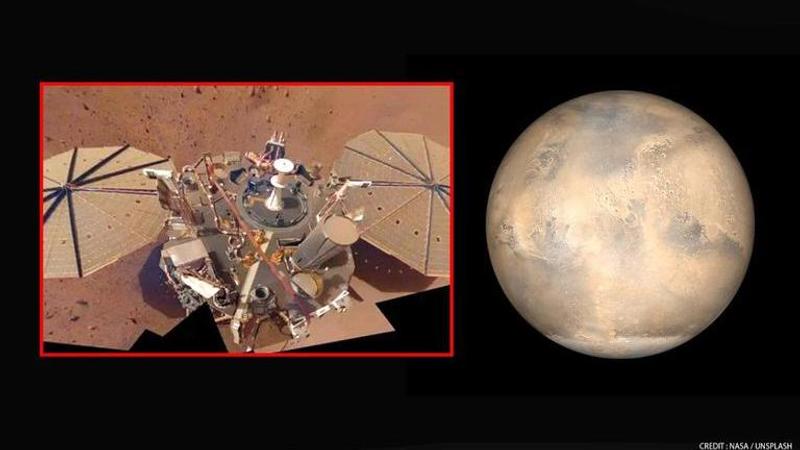Published 20:14 IST, March 22nd 2021
NASA's InSight lander measures size of Mars’ molten core with help of 'Marsquakes'
NASA’s Insight has conducted an analysis of over 500 marsquakes, deeply studying the fundamental layers of the red planet to measure its molten core.

In a very first experiment of the type, NASA’s InSight rover has gauged the size of Mars’s core by listening to seismic energy from the Red Planets’ ‘Marsquakes’, scientists told reporters this week at the virtual Lunar and Planetary Science Conference in Houston, Texas. According to NASA, the Martian core which measures roughly 1,810 to 1,860 kilometers is half of the Earth’s, defying some of the previously anticipated measurements purported by the researchers. Mars’ core is “less dense than had been predicted”, NASA said in a release, adding that the red planet has a molten liquid iron.
According to the research published in the journal Nature, NASA’s Insight has conducted an analysis of over 500 marsquakes, deeply studying the fundamental layers of the red planet. Scientists stated that the measurement of Mars's molten iron core and the study of the crust, mantle, and core of the neighbouring planet is crucial for understanding its formation and evolution. The measurement will also help the scientific community to determine Mars’s dense, metal-rich core’s separation from its rocky mantle.
"Mars is influenced by the gravitational pull of the Sun. This causes a solid body tide with a bulge toward and away from the Sun (similar in concept to the tides on Earth). However, for Mars this bulge is much smaller, less than 1 centimeter (0.4 inches),” Dr. Charles Yoder, a planetary scientist at NASA JPL explained. He added, “By measuring this bulge in the Mars gravity field we can determine how flexible Mars is.” Mars’ inner elements’ measurement also helps explore the possibility that the core may be at least partially liquid.
[Image Credit: NASA]
[Image Credit: Twitter/ @EuroGeosciences]
Exploring since 2018
NASA InSight Lander has been exploring the Martian surface since 2018, and it started recording the marsquakes that were relatively smaller. However, the spacecraft was able to record at least seismic waves travelling the straight line between the mars’ skim near the surface and the quake. The tremors bounced back even before they could be picked up on the detectors. The compilation of the data from the series of quakes by Insight found that the waves were sent between the planet’s mantle and core at a speed of 500 seconds after the very first tremor. NASA’s scientists were able to calculate the core’s dimensions using time difference in the direction of the waves and found that the Red planet’s radius was roughly1810 to 1860 kilometers. This implied that the Mars interior is richer in lighter elements like oxygen and is less dense than the Earth.
[Image Credit: NASA]
Updated 20:14 IST, March 22nd 2021






